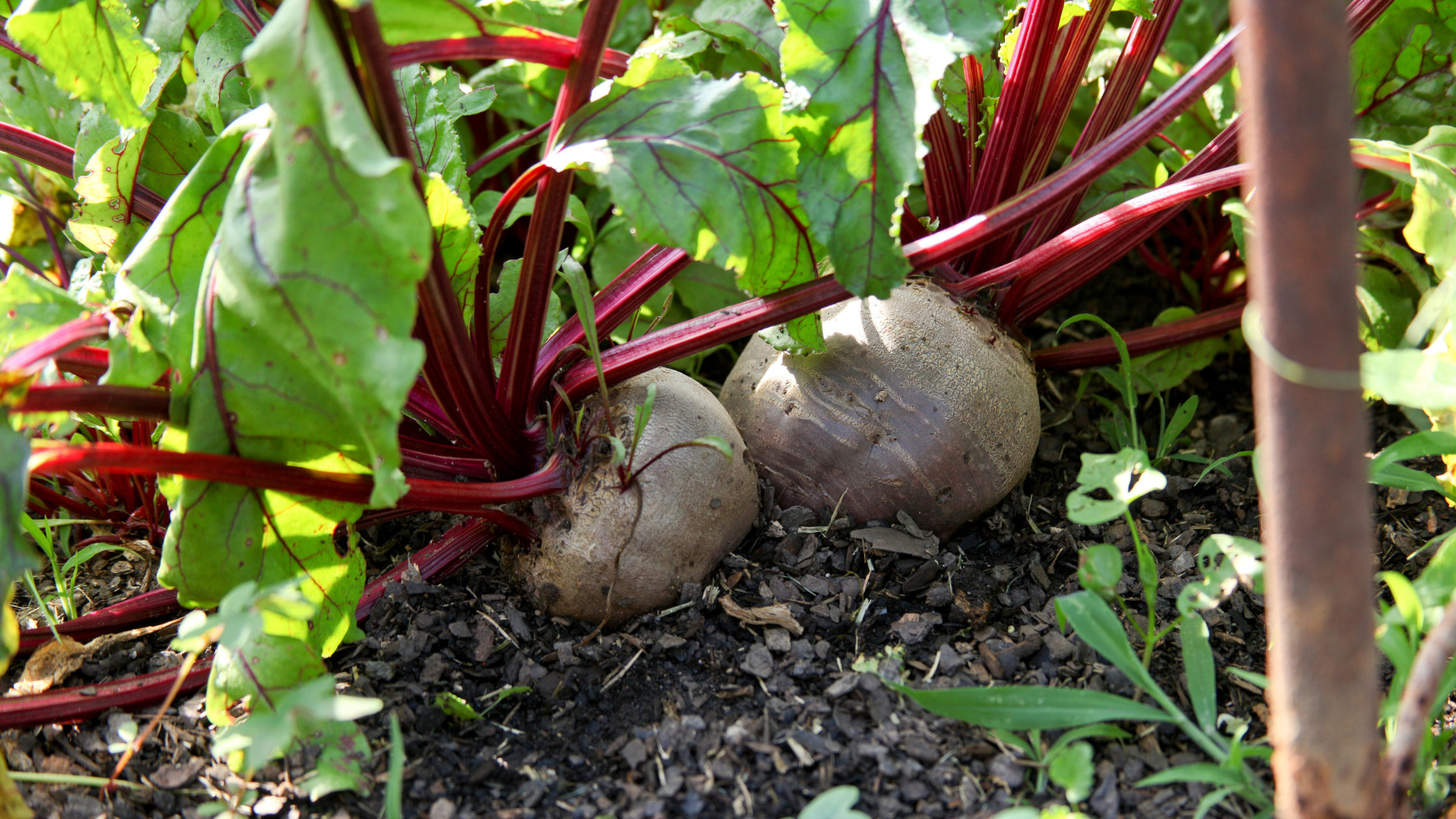Sow True Seed: Our Generative AI Policy
Sow True Seed will never use generative AI in any art, copywriting, blog posts, or advertisements of any kind. Our human-first business will continue to be just that - human...
Fresh new look, same great seeds - read all about our brand refresh on our blog!
Free Shipping on All Orders - All December Long!
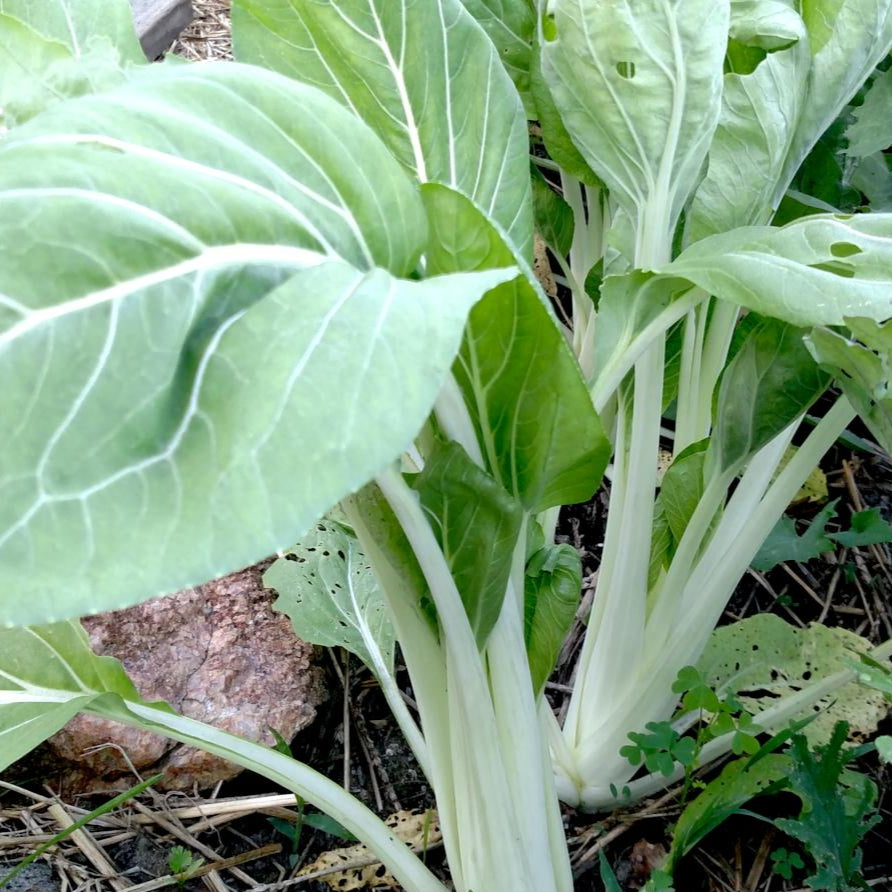
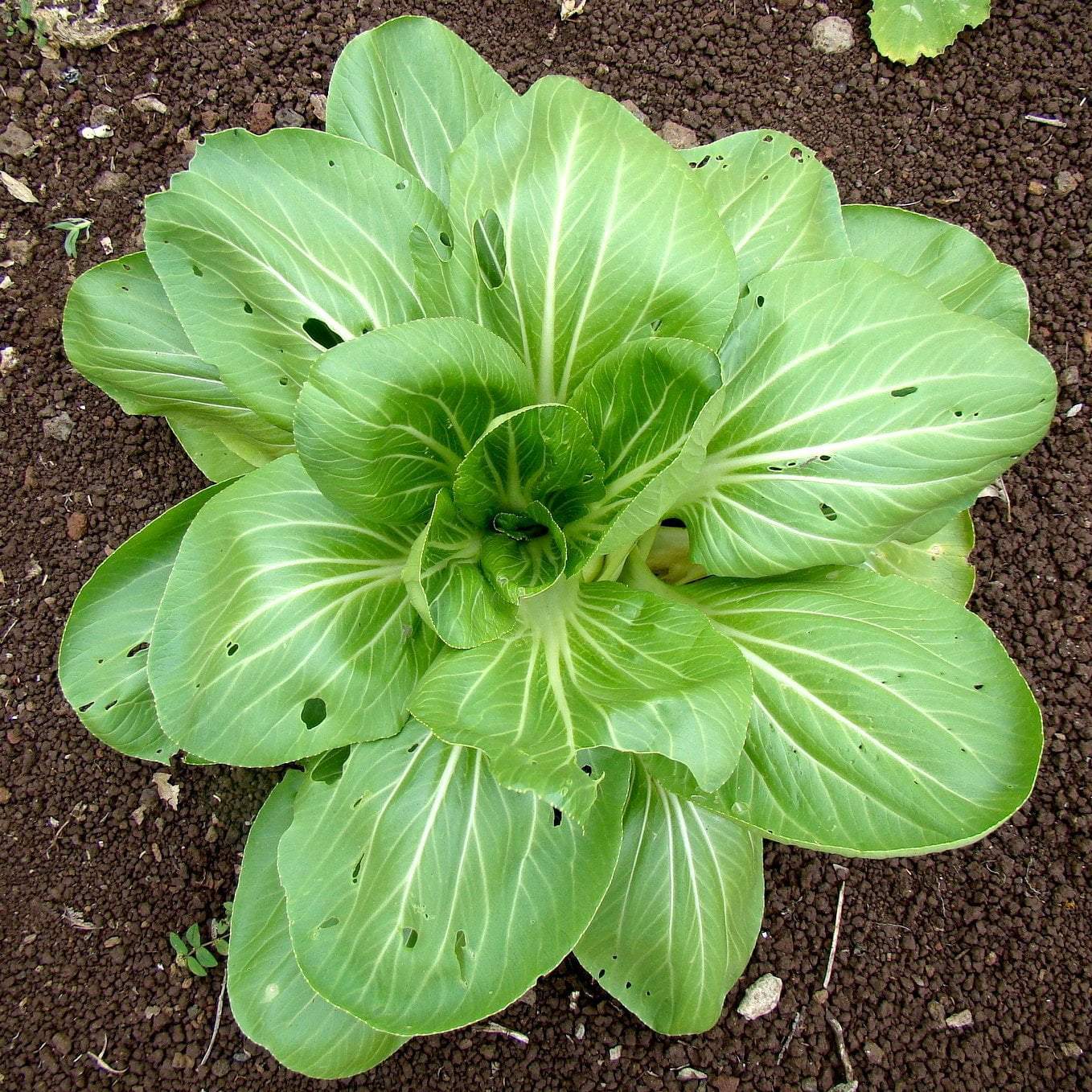
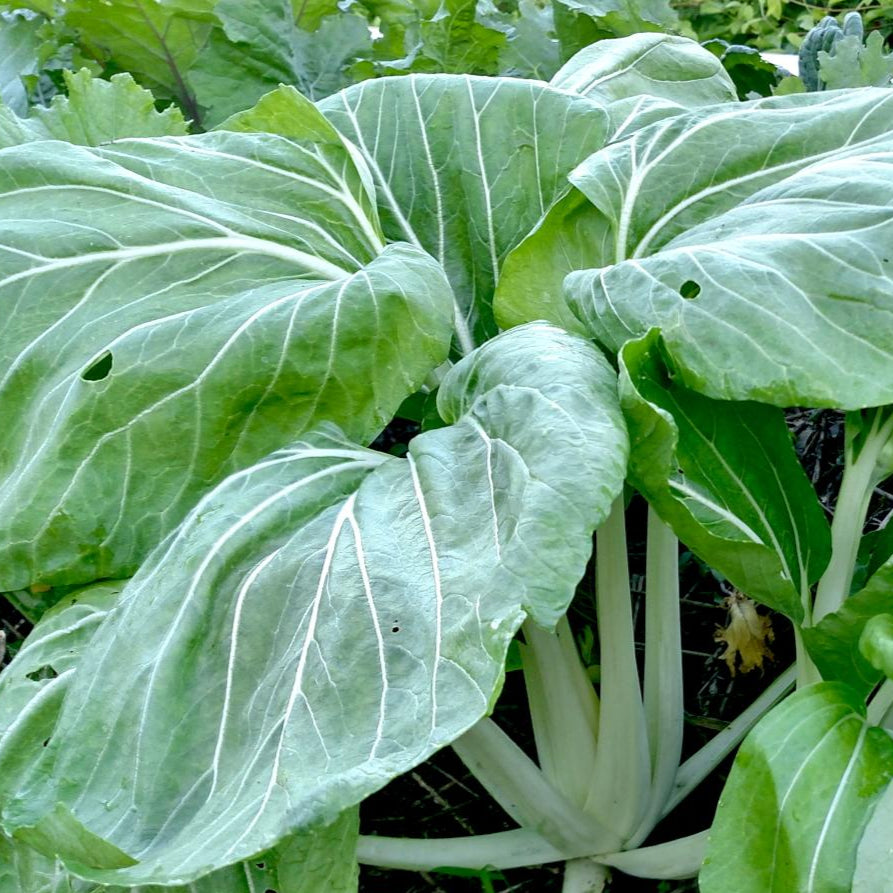
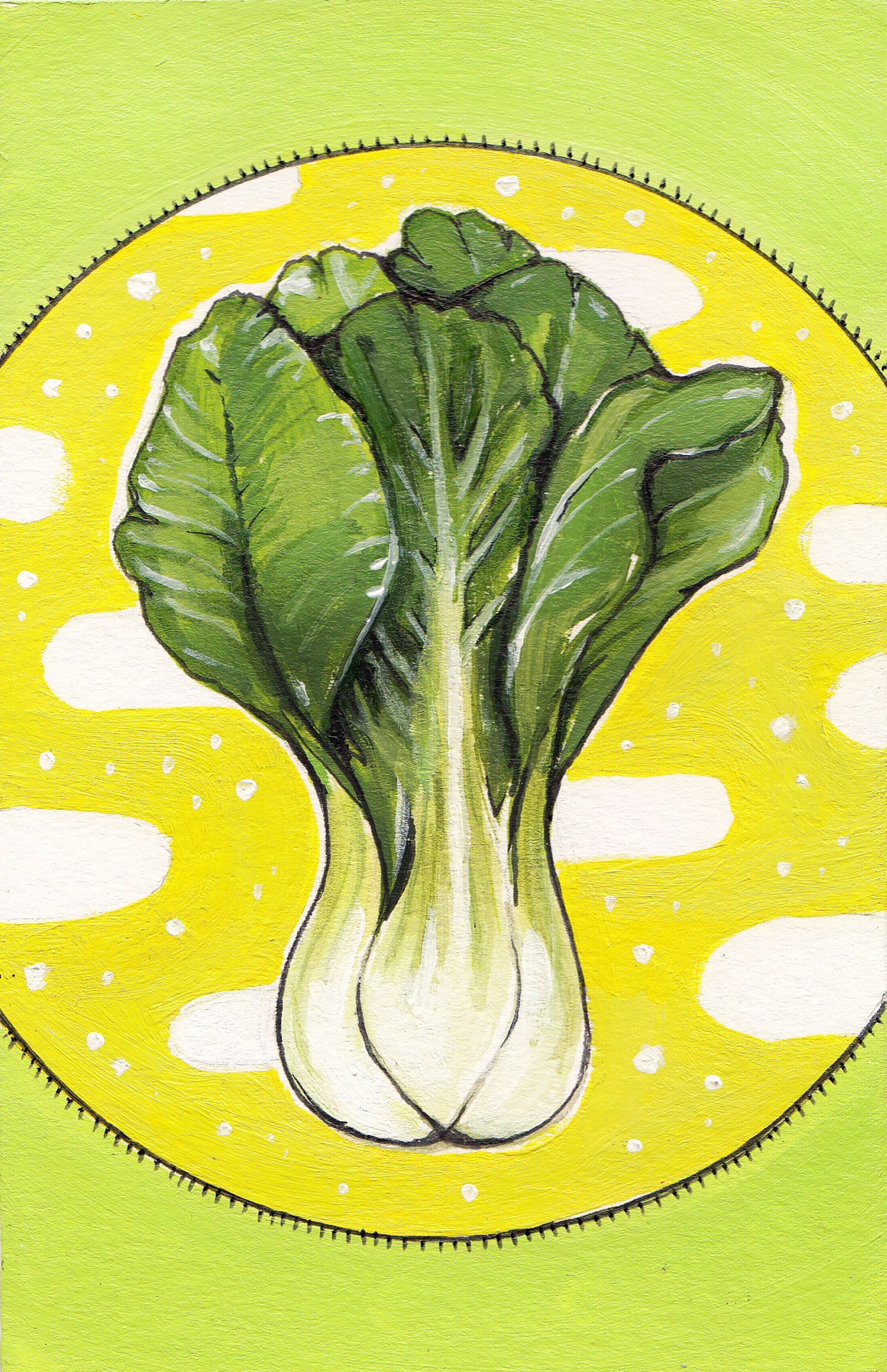
Bok choy, pak choy, pak choi - however you spell it, it makes a great stir fry! This non-heading Chinese cabbage grows in a beautiful vase-shaped rosette with crunchy white stems and slightly peppery, glossy green leaves. There could hardly be an easier vegetable to grow. It matures quickly, is slow to bolt in hot weather, and cold-hardy too. It can be used raw, but is more often eaten cooked, benefitting from a sear and just a few minutes in the pan to soften the stems. Also makes great kimchi!
This chinese cabbage is closely related to turnips and mustard and is native to China. It was introduced in the US in the 19th century by Chinese immigrants arriving in the US to work during the gold rush. Farmers in Asia will grow numerous varieties of bok choy, but typically here, you’ll find mainly this white stemmed version.
Bok choy is a great seed to direct sow in the garden in late summer for delicious, crunchy fall asian greens. It can also be started indoors in spring, four weeks before your last frost date. Bok choy prefers full sun and well-draining soil. Bok choy can be harvested at any stage of growth - leaves, baby bok choy, or fully grown. It takes about 45 days to reach full size (approximately 12 inches tall and wide), making it a great option for squeezing one last harvest into the beginning or end of the season. Full sun. Typically grown as an annual.
Approximately 765 seeds per packet.
Minimum Seeds per Packet: 200
Packet Weight: 1.5g
Planting Season: Spring, Fall
Sowing Method: Transplant or Direct Seed
Seed Depth: 1/4"
Direct Seed Spacing: 1"
Soil Temperature: 50-80 ℉
Days to Sprout: 3-12
Mature Spacing: 4-8"
Sun Requirement: Full Sun
Frost Tolerance: Moderate Tolerance
Days to Harvest: 45
Bok choy and pak choi (and any other number of spellings) are often used interchangeably. Does it matter? Is there a difference? Let’s get into it. Pak choi is sometimes referred to as the British version of the name. However, other folks will make a distinction between pak choi typically having a green stem and bok choy having a white stem. The green stemmed and white stemmed version of the plant are the same species. Whatever you call it, this asian green should most certainly be growing in your garden.
Bok choy seeds could not be easier to grow. You’ll want an area with full sun and well-draining soil, but at only 45 days to harvest, you can squeeze this crop in just about anywhere.
Seeds should be sown indoors in the spring, about four weeks before your last frost date. In a seed tray with well-draining, nutrient rich soil, sow your bok choy seeds ¼ inch deep, with one to two seeds per cell. Pat down the soil lightly to ensure adequate seed to soil contact. Bok choy should germinate pretty quickly, between three and 12 days, depending on moisture and temperature. You’ll want to ensure you keep your seeds well-watered until they germinate and throughout their growth. We recommend watering twice a day but ensuring the soil is not sopping wet. These same directions apply when direct seeding bok choy as well.
When starting your seeds indoors, it will be helpful to provide high quality grow lights to your bok choy seedlings. Ensuring that your seedlings get enough light will help prevent them from getting leggy or stunted before they’ve even had a chance to thrive. In most areas in the spring there is rarely enough light to grow healthy seedlings, even in the sunniest of south-facing windows.
Like most cool weather, fast growing greens, we recommend starting your bok choy seeds indoors about four weeks before your last frost date in the spring. For a fall harvest, you can direct sow bok choy seeds into your garden in late summer. Cold temperatures in the spring can cause issues with your bok choy if you try to plant outside too early. But when sowing in late summer, temperatures are warm and comfortable, which makes bok choy mature quickly and confidently, producing mature plants that are cold hardy and frost tolerant.
When seeds are started indoors and transplanted outside, they have to be hardened off. Hardening off is the process of acclimating your plants to outdoor weather conditions and temperatures. Inside your home or greenhouse, your seedlings have been coddled. Outside in the garden, things are a little different. Hardening them off will allow them to adjust rather than experience shock once planted outdoors. About a week before you plan to transfer your plants to the garden, you’ll begin leaving your plants outside in a partially shaded area starting for an hour or two. You’ll slowly introduce them to full sun and longer hours outdoors over the course of a week or two. Once you’ve completed this process, your transplants can be safely planted out in the garden.
When considering a location for your bok choy seedlings, select a location with full sun, ideally with eight hours of sunlight per day. They will love rich, well-draining soil. Before planting, soil can be amended with plenty of compost and organic matter, especially if you deal with clay soils like we do here in zone seven.
We recommend rotating all of your crops. Try to select a location that hasn’t had other brassicas in it in the last two to three years. Ensure that your bok choy seedlings will be able to grow at their mature planting distance of eight to 12 inches. Overcrowded bok choy means less airflow, plants competing for nutrients, and faster spread of disease and pests.
When transplanting your bok choy seedlings, take care not to disturb the roots. We recommend digging a hole about twice the size of the root ball of the transplant. At the bottom of the hole, you might consider including some water soluble balanced fertilizer (the amount will be specified on the box or bottle). Adding fertilizer can give your bok choy and other crops the boost they need to grow strong and produce effectively, but in the case of many greens, it’s largely unnecessary. Water thoroughly at planting time. Continue to water frequently in the first few weeks to help get the plants established. Mulching is also a good idea to conserve moisture and decrease weed pressure.
As always, it is really important to water regularly and maintain soil dampness from the time you plant a seed until it is a more established plant at which point it is better equipped to handle environmental stress. Not watering enough is the number one reason people struggle with germination and survival of seedlings!
Harvesting bok choy is truly foolproof, as you can harvest at any stage of growth. When you thin your seeds, toss the discarded thinnings onto your next sandwich like microgreens! Love some baby bok choy in your curry? Harvest when they’re only a few inches tall. Can’t wait for them to mature? Pull off the outside leaves, allowing the crown to keep growing to maturity for a later and longer harvest. Ready for a full sized head? Use a sharp knife to separate the head from the roots at soil level.
There is one rule to harvesting bok choy. We recommend harvesting before your area starts getting hard freezes as this will kill off the plant and it will become mushy and inedible.
The species Brassica rapa can either be grown as an annual or a biennial. When it comes to bok choy, it is grown as an annual for vegetable harvest and seed production. Bok choy produces perfect flowers that are self-incompatible. This means that the crop will rely on insect pollination in order to produce seed. To grow bok choy for seed, we’d recommend having a population size of at least five plants (though between 20 and 80 is typically recommended for large scale genetic preservation). You should note that when growing bok choy for seed, the mature spacing distance increases to 12 to 18 inches and staking your plants is recommended, as the racemes can reach or exceed four feet in height. This will allow for ample room and airflow around the plants, ensuring healthy seed production. You should also ensure you leave adequate time for the plants to mature before long days or high temperatures cause bolting. Bolting or seed production on immature plants will not produce the healthiest of seeds. When growing multiple varieties of Brassica rapa, particularly other annual varieties, it’s recommended to isolate the types by 800 feet to ½ mile. Managing this kind of distance may be difficult but it’s mainly important if multiple varieties of Brassica rapa will be flowering at the same time.
Harvesting Brassica rapa seeds is very similar to harvesting other brassica species. The specific time of seed harvest will depend on location and what time of the growing season the bok choy was planted. Because bok choy is grown as an annual, it will produce a harvestable crop, flower, and set seed in the same year.
At seed maturity the seed pods, called siliques, dry out and turn a light brown color. The seeds themselves will range from a reddish to dark brown color. The window of time for harvest may be pretty short as the siliques are prone to shattering as well as bird predation. But entire stalks can be cut down at once and placed on a tarp, sheet, or in a container to prevent seed loss. Once harvested, and depending on maturity, the stalks and siliques should be dried for one to five days (until a fingernail will not leave a dent), either in the sun if the weather allows, or in a protected area.
Smaller lots of seeds can be threshed by rolling the siliques between your hands, which causes them to break open and the seeds to fall out. If the pods are fully dried, they will release their seeds easily. Brassica rapa seeds can be expected to hold their viability for six years if stored under cool dry conditions in an airtight container.
Sow True Seed will never use generative AI in any art, copywriting, blog posts, or advertisements of any kind. Our human-first business will continue to be just that - human...
Brussels Sprouts can be grown in all areas of the United States. Their long time to maturity and sensitivity to nutrient imbalances have given them a reputation for being difficult....
Sometimes with beets it seems that people love them or… don’t love them. But we are of the belief that if you think you don’t love beets - you just...



